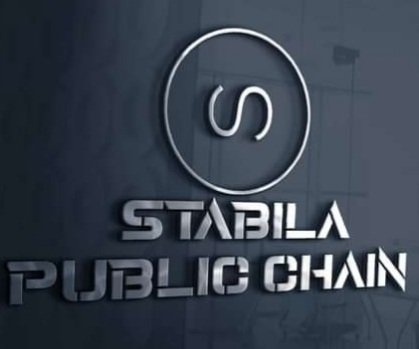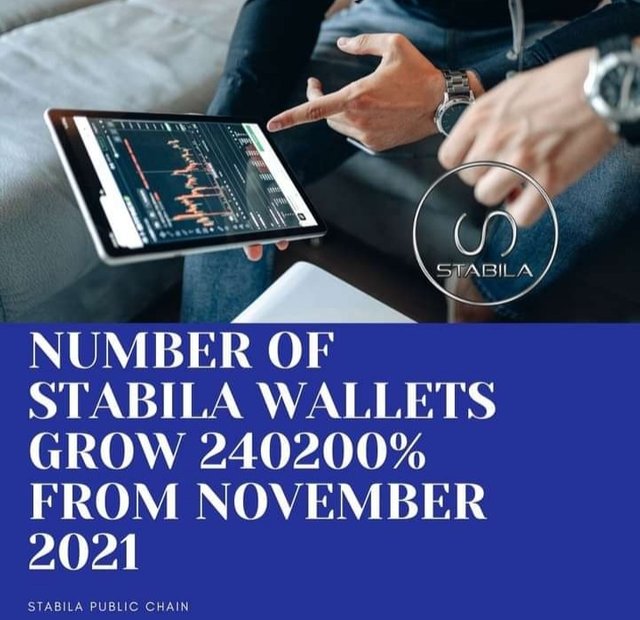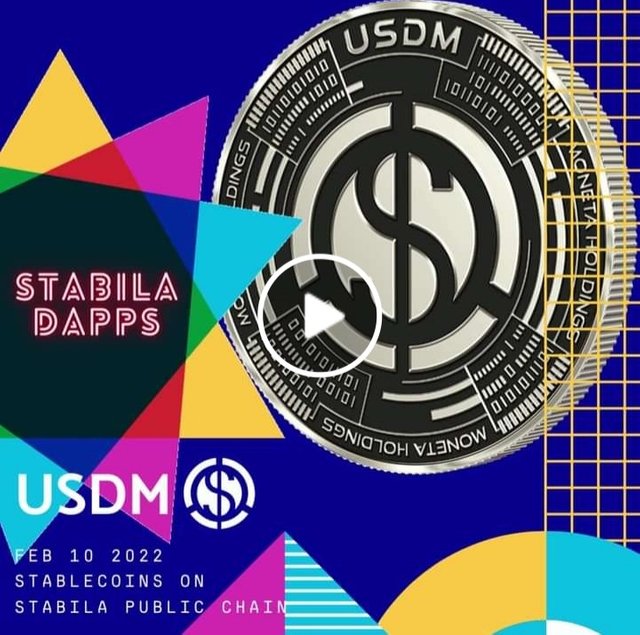
INTRODUCTION
As the technology of #blockchain evolves, the world is bound to see a lot of changes, especially in the financial services sector. One company that is trying to make a change is the #STABILA. They are a project committed to financial system decentralization. Their #STABILA Protocol provides a public #blockchain service with high throughput, flexibility, and reliability. All of the #Decentralized Applications (DApps) in the #STABILA space are licensed to counter fraud and minimize risk for its users.
THE ARCHITECTURE
The three layers is #STABILA architecture are storage, core and application.
The #STABILA protocol defines the rules for communication between #blockchain and DApps. Now we use Google protocol buffers for the #STABILA protocol.
The Google Protobuf, which allows multi language extension by default. It is a fast, efficient, language-neutral and extensible way of serializing structured data for use in communications protocols, data storage, and more. It is a binary encoding format, similar to protocol buffers, that can be used in many different programming languages. In #STABILA, protocol is defined by the protocol buffer, which stores data in a binary format in proto files.
STABILA Virtual Machine (SVM)
In the current world of technology, it is imperative that you make sure your company’s product incorporates the latest in virtual machine technology. The SVM is a very lightweight virtual machine and has been fully integrated into the current environment which means that it's highly responsive to data.
DECETRALISED EXCHANGE (DEX)
#Decentralized Exchanged Exchange feature of the application code is implemented in SRC-10 tokenization platform. Dependent on specific trading pairings, cross-trading between different numbers of coins can create a #decentralized exchange. A trade that takes place between two different pairs of coins (a combination of 2 to 3 or 4 separate currency values) is referred to as an exchange.
#Decentralized Exchanges are a type of platform which can be used to trade assets from one person to another without traditional intermediaries, like third-party brokers. You set your own rates on this type of exchange, and the trades happen in order without someone overseeing it or trying to take a cut of the profits. This way, you get fair pricing instead of being taken advantage of. For example, when trading real estate comes into play you want an exchange that isn’t going to charge exorbitant fees just because they think they can get away with it because you don’t have other options available to you. The only problem is that right now there aren’t too many #decentralized exchanges out there yet - which is why we developed the #STABILA #blockchain with #decentralized exchange features built-in so that people who use our technology can benefit from what we hope will someday become the norm in terms of how asset transfers are handled.

CONSENSUS
Delegated proof of stake
Many new networks suggested the proof of stake (POS) consensus technique. POS stands for "proof of stake" which involves cryptoasset owners or stakeholders locking up their tokens in order to secure the network. The people who stake their assets, also known as validators, then vote on potential future blocks and add them to the #blockchain once it has been validated. In many POS systems, these validators get rewarded with fees taken from each transaction that they validate plus a block reward.
The STABILA consensus protocol allows stakeholders to elect 'Governors' who will act as block validators on the network. Delegated Proof of Stake (DPOS) is employed by the protocol in which 21 fully confirmed stakeholder accounts are voted to validate blocks every 3 seconds. The Governosrs are voted by the stakeholders who have the opportunity to become a Governor at any time. To stay a validated block-producer all Gs have one vote and must get more than half votes (i.e., 77 percent) to remain in that position. With each new selection, previous Executives lose their positions and have return power as Ordinary Account members where they can restart their climbing of votes/rankings on the network as another citizen account member with economic value / stake.
ACCOUNT
There are three types of accounts in #STABILA network.
- Standard transactions are handled using regular accounts.
- SRC-10 tokens are stored in token accounts.
- Contract accounts are basically smart accounts that are established by
ordinary accounts and can also be activated by them.
Account Creation
A STABILA account can be created in one of three ways:
- Use the API to create a new account.
- Move #STB to a different address.
- Send any SRC-10 tokens to a new address.
PRIVATE AND ADDRESS GENERATION
An address (public key) and a private key can be used to create an offline key pair. The user address generation algorithm begins with the creation of a key pair, followed by the extraction of the public key (64-byte byte
array representing x, ycoordinates) [1].
Extract the final 20 bytes of the hashed public key using the SHA3-256 function (the SHA3 protocol used is KECCAK-256). The initial address length should be 21 bytes, and 3F should be appended to the start of the byte array.
Use the SHA3-256 algorithm to hash the address twice and use the first four bytes as a verification code. You may acquire the address in base58check format by attaching the authentication code to the end of the initial address and encoding it with base58.
The first character of an encoded #Stabila Mainnet address is S, and it is 34 bytes long
TRANSACTION
STABILA uses ECDSA cryptography method with an SECP256K1 selection curve for transaction signature. The public key is a point on the elliptic curve, while the private key is a random number. To get a public key, first generate a random integer as a private key, and then multiply the private key by the base point of the elliptic curve to get the public key. When a transaction takes place, the unprocessed data is transformed into byte format first. The unprocessed data is subsequently hashed using SHA-256 algorithm.
BANDWIDTH
Smart contracts consume both UCR (units of conventional resources) and BP (bandwidth points), whereas ordinary transactions just consume bandwidth points. #STB users may earn bandwidth credits by generating Contracts of Deposits (CD). Every day, 500 free bandwidth points are accessible through the daily credit reward. For example, if an #STB transaction is broadcast, it is transferred and stored across the network as a byte array. The amount of bytes in a transaction multiplied by the total bandwidth points rate equals the number of required bandwidth points for that transaction.

FEE
Most transactions on the #STABILA network cost bandwidth points because as with most networks, we want to make sure that all of our users are abiding by fair use practices. For example, if a certain transaction happens to use abnormally high amounts of bandwidth for its own good, then other transactions around it will start suffering which is not exclusive to the #STABILA network but any kind of data sharing network. Therefore, in order to keep the #STABILA ecosystem both safe and efficient, these kinds of smart contract transactions require UCR tokens paying for security deposits and for making sure no one will try to disrupt the operation or stop it without having paid a sufficient amount of UCR in charge. There are no network fees involved in doing what needs to be done or sent over there so they're pretty fair and safe this way.
STABILA VIRTUAL MACHINE
SVM's name stands for #STABILA Virtual Machine, which is a fully virtualized machine. Its mission is to create an efficient, secure and scalable blockchain service. SVM was initially a fork of TRON TVM. SVM works in tandem with the current Solidity smart contract development environment. DPOS consensus is also supported by SVM. On SVM, transaction and smart contract operations are free, and no #STB is used. The compiler converts the Solidity smart contract into bytecode that the SVM can read and execute.
SMART CONTRACT
SVM is compatible with EVM and more standard virtual machines. This will help to expand the capacity limit of the Ethereum #blockchain. Because of the potentially fraudulent nature of smart contracts, it is recommended that all users have licensing mechanisms before they can implement SVM.
SMART CONTRACT LICENSING
Smart Contracts do not come with associated assets and therefore lack asset backup proofing mechanisms. Smart contracts are also not capable of communicating with external parties. The suggested licensing model works effectively with only one asset-backed smart contract. This ensures that clients on the #STABILA network will be safeguarded in the event that a smart contract owner is unable to keep up with his smart contract, which may happen from time to time as an organization carrying out operations on #STABILA network has no obligation to work indefinitely.
STABILACHAIN SETTING
Total supply....... 30,000,000
Circulating supply.... 20,000,000
Block producing speed.... 3
Miners.............................21
Max. Supply.................30,000,000
Consensus................... 15
CONCLUSION
Every account in the #STABILA Network is eligible to apply and become a member of the community. Such an account can then participate in the governance (block creation) process if they are successfully voted into a position as a governor, who build up their reputation based on how consistently they follow functionality set rules. This Process occurs every six hours, when every governor with the missing block will have to re-apply in order to remain relevant, so that it doesn’t get centralized by only one person/party. To become eligible for voting, an applicant pays 1 #STB before being added to the eligible Votes List and has at least 150 blocks created by others.
PROJECT LINKS
Website: https://stabilascan.org/
Telegram: https://t.me/stabilastb
Whitepaper: https://stabilascan.org/static-pages/white-paper
ANN: https://bitcointalk.org/index.php?topic=5379020.msg58848428#msg58848428
Facebook: https://www.facebook.com/stabilacrypto
Twitter: https://twitter.com/moneta_holdings
Youtube: https://www.youtube.com/channel/UChFtE8tAVlkWGkFrUb-7KOQ
Reddit: https://www.reddit.com/r/moneta_holdings/
LinkedIn: https://www.linkedin.com/company/stabilacrypto
Instagram: https://www.instagram.com/monetaholdings/
AUTHOR
Bitcointalk Username: Helpcruel
Bitcointalk Profile Link: https://bitcointalk.org/index.php?action=profile;u=2768343
Proof of Authentication: https://bitcointalk.org/index.php?topic=5379099.msg59005968#msg59005968
Telegram Username: @Helpcruel
BSC Wallet Address: 0x449449B9801b46e4FA5222f59645896327a67d90